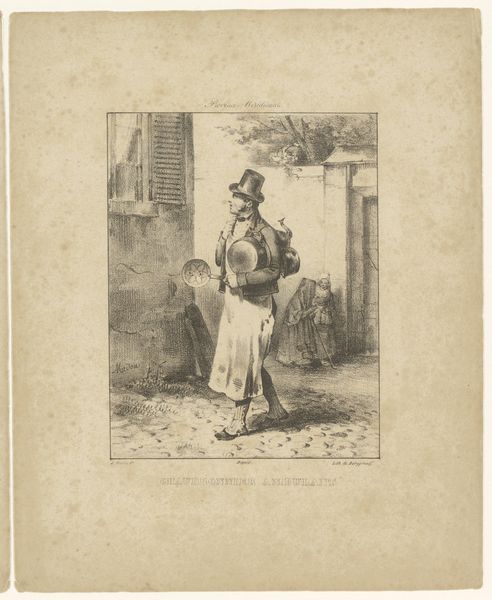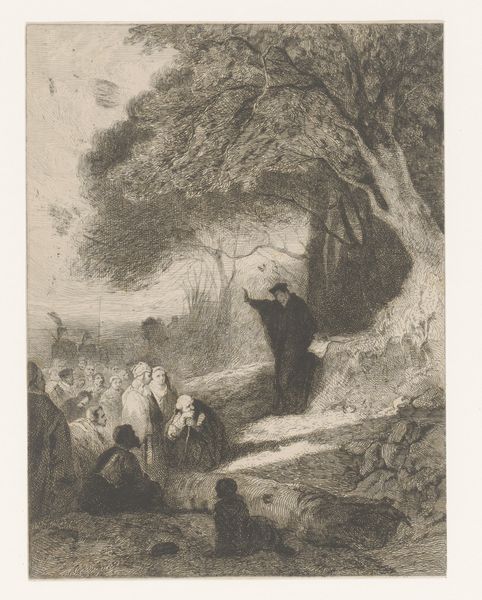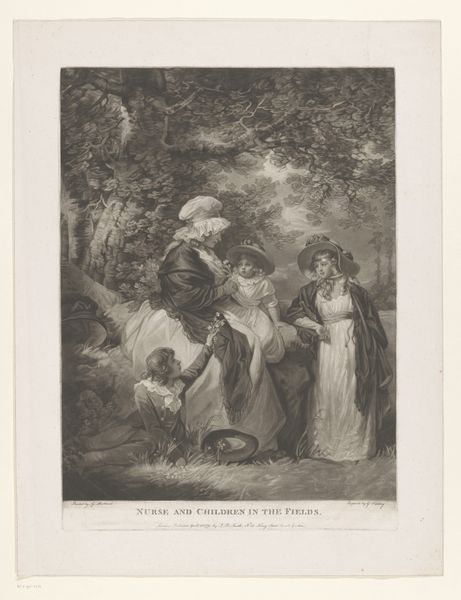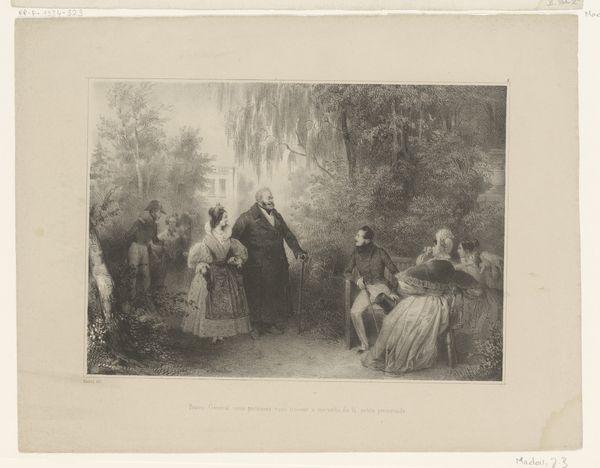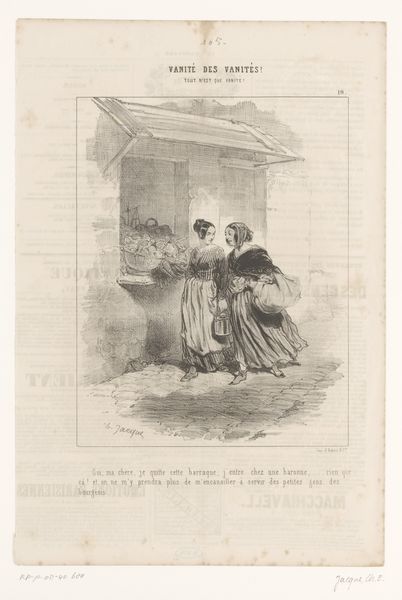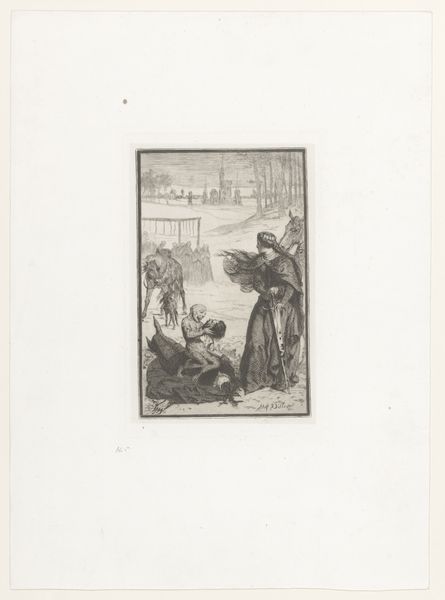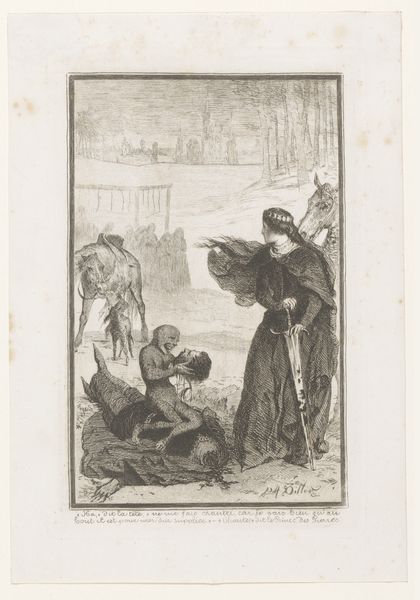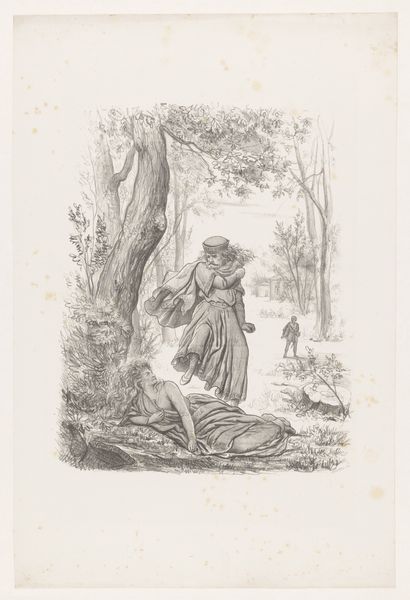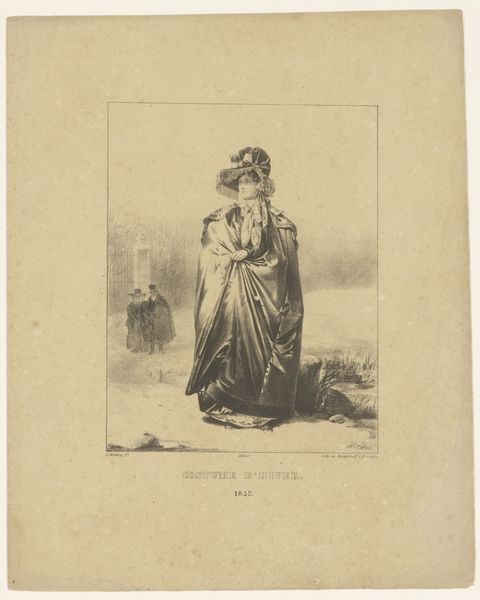
drawing, lithograph, print
#
pencil drawn
#
drawing
#
narrative-art
#
lithograph
# print
#
caricature
#
pencil sketch
#
figuration
#
pencil drawing
#
romanticism
#
genre-painting
Dimensions: height 289 mm, width 210 mm
Copyright: Rijks Museum: Open Domain
Curator: Here we have "Two Criminals Assaulting a Young Woman" by Paul Gavarni, made in 1846. It’s a lithograph, a type of print, currently held in the Rijksmuseum. What are your initial impressions? Editor: Stark and immediate. It feels very much of its time. The hurried lines and shadowed figures give it an almost cinematic, anxious energy, doesn’t it? You can almost feel the cheapness of the paper, and how these mass-produced prints democratized art. Curator: Absolutely. Gavarni's work frequently commented on the social issues of 19th-century Paris. The image portrays a dark reality – the vulnerability of women and the ever-present threat of violence in urban spaces. Notice the specific attire. The clothing, typical for that period, signifies social roles and also contributes to the narrative’s impact. Editor: The emphasis on fashion, the frock coats, the bonnets…they're presented with the same weight as the actions depicted. Gavarni is showing us the machinery of social stratification as it plays out on the street, but doing so through the physical traces and gestures that mark labor and leisure. I am interested in that paper: how was it produced? By whom? And under what working conditions? Curator: Considering Gavarni's wider body of work, it also acts as a powerful form of social commentary. He was highlighting the disparities and moral decay that simmered beneath the surface of bourgeois life. There is a newspaper fragment bleeding through on the print itself. Does it offer further comment? What stories did Gavarni feel like he was countering or highlighting? Editor: That ghosted newsprint visible beneath adds another layer, highlighting the processes involved in this artwork's existence. Think about it; cheap newsprint readily available juxtaposed with images of societal ills intended for mass consumption. I wonder how his artistic choices made this readily available material speak to a diverse audience and contribute to broader public awareness? Curator: Yes, it invites us to question how we consume such imagery and what our role is in perpetuating or challenging these societal narratives. He compels us to confront uncomfortable truths about the era. Editor: And consider the economics of image making: these mass-produced prints circulated ideas, fueled debate. They made images available for all those that had formerly been the reserve of elites. These are all social processes tied inextricably to the material conditions. Curator: A fitting intersection of art, commentary, and production then. I leave with a deepened consideration of how easily imagery influences societal viewpoints, whether yesterday or today. Editor: And for me, I leave with more questions about how art's materials shape our vision, and the unseen workers who enable artists like Gavarni to convey his message.
Comments
No comments
Be the first to comment and join the conversation on the ultimate creative platform.
